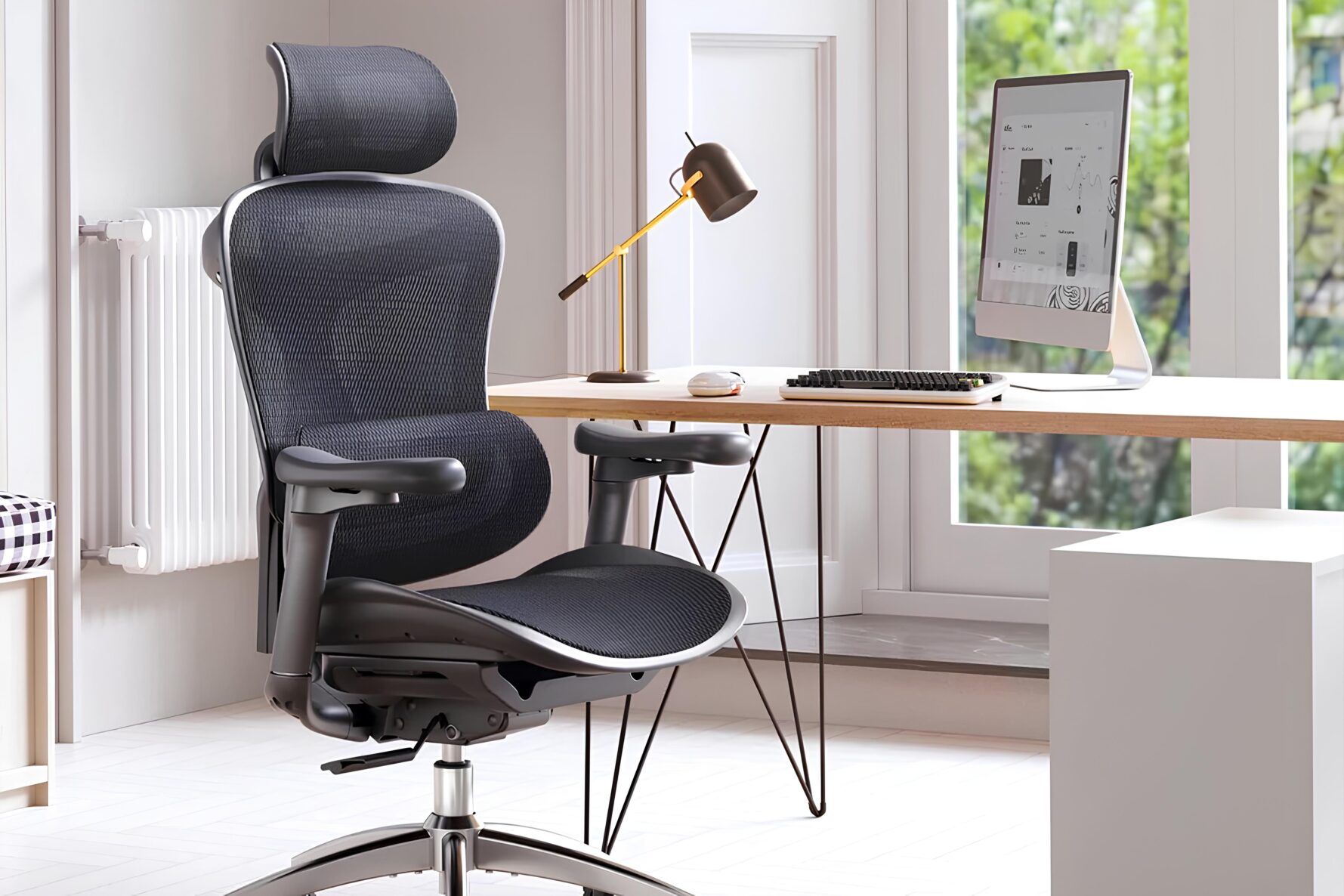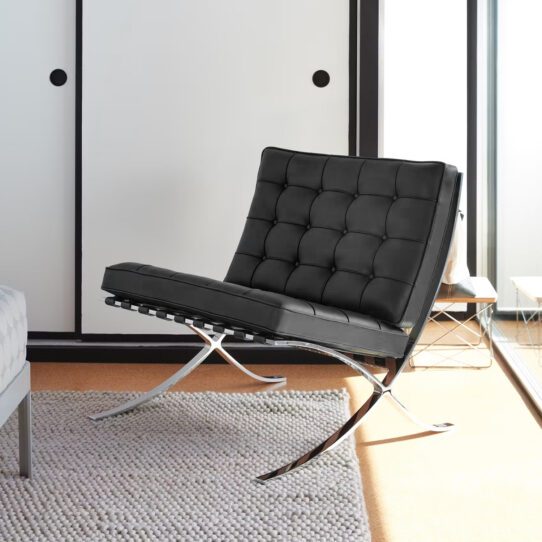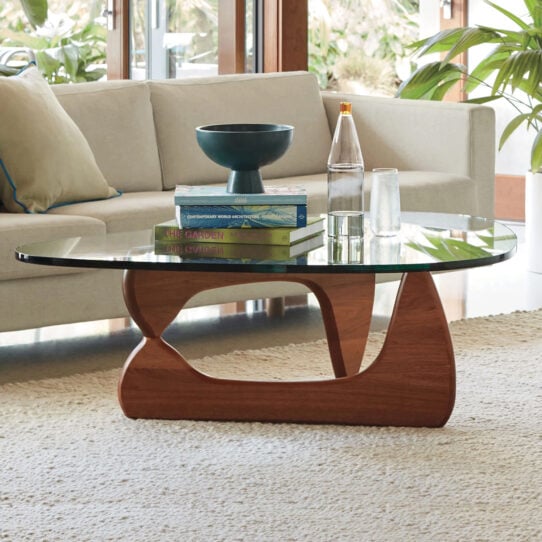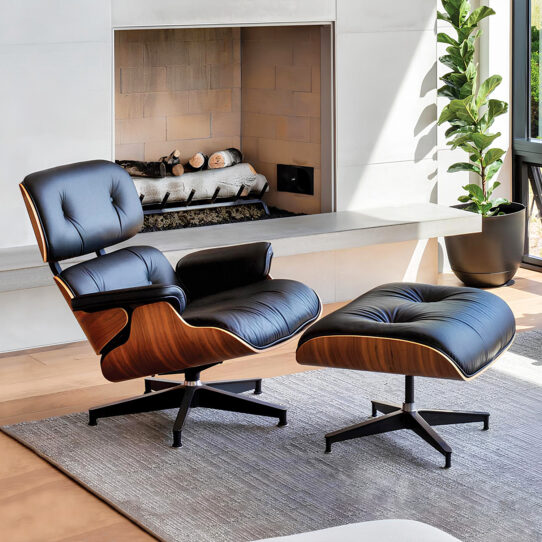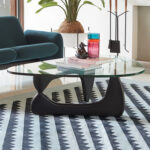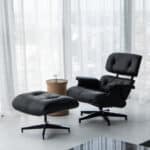Selecting the right Office Chair with Headrest is key to ensuring maximum comfort and maintaining proper posture during long working hours. The choice involves a careful consideration of several factors including ergonomics, adjustability, material quality, and more.

An ideal Office Chair with Headrest not only supports your back, neck, and shoulders but also enhances productivity and well-being. This guide aims to illuminate the essential features to look for, helping you navigate through the myriad of options to find your perfect match.
Ergonomic Design
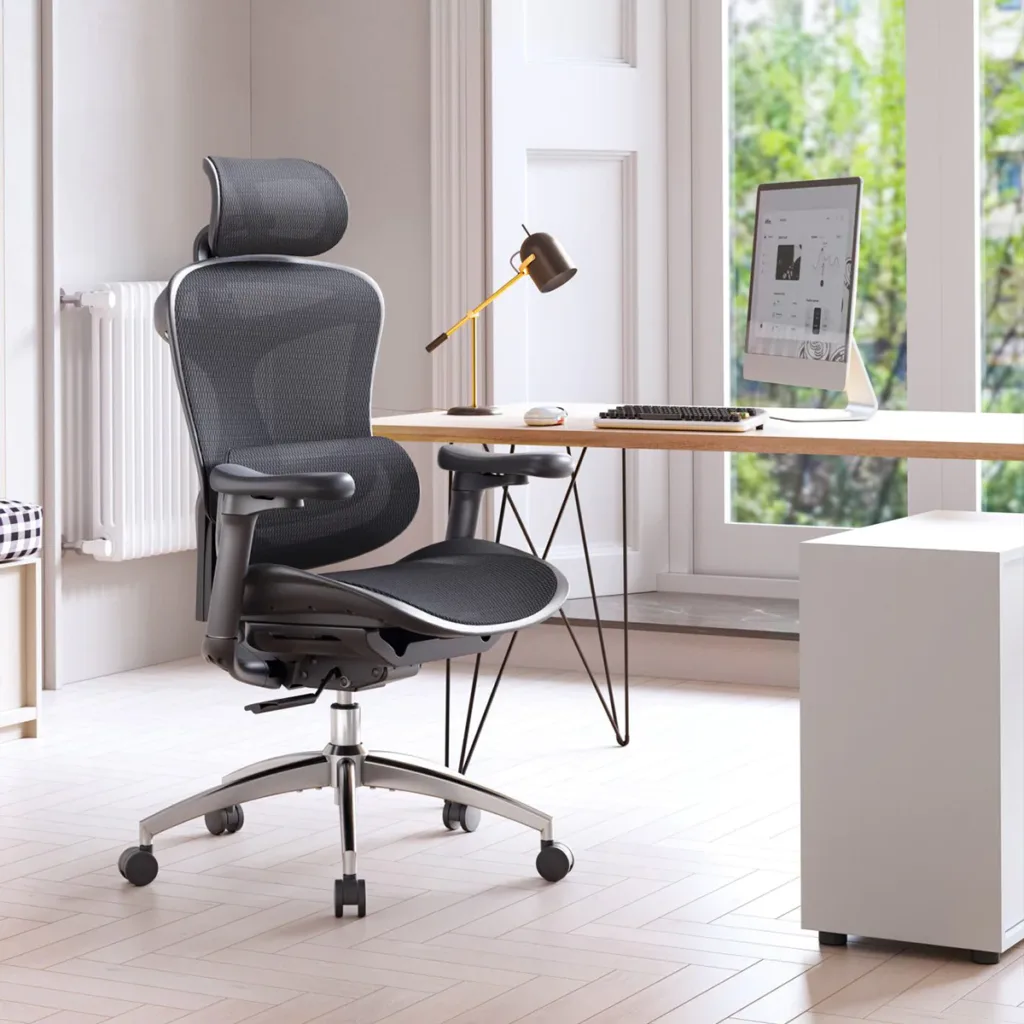
An ergonomic design is foundational in preventing stress and discomfort during prolonged periods of sitting. Chairs that offer tailored lumbar support, conforming to your spine’s natural curvature, are essential. Adjustable armrests, seat depth, and tilt mechanisms enhance the chair’s ergonomic benefits, allowing for a personalized seating experience that fosters good posture and reduces the risk of musculoskeletal issues. The goal is to find a chair that supports the natural alignment of your body, ensuring comfort and well-being during long hours of work.
Adjustable Headrest
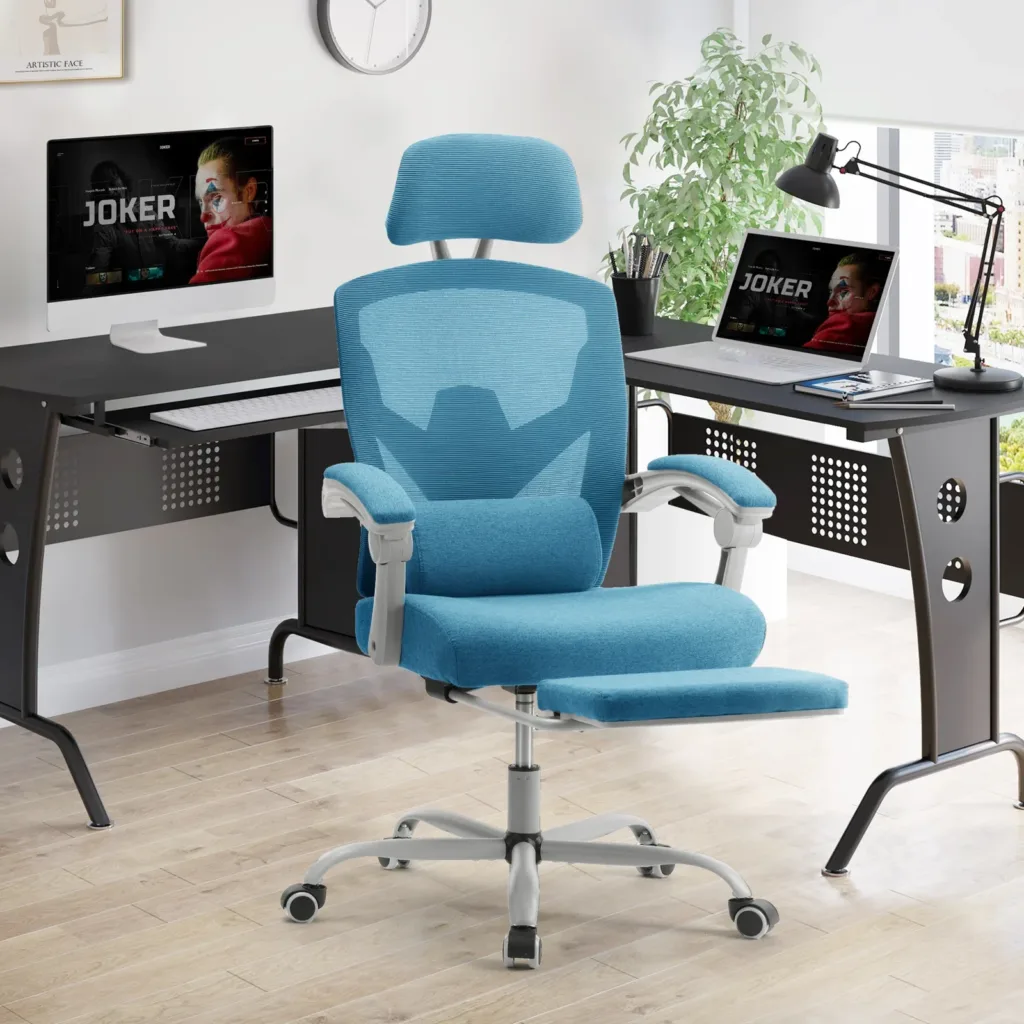
The importance of an adjustable headrest cannot be overstated, as it provides critical support for the neck and head, especially during extended sitting sessions. A chair featuring a headrest that can be adjusted for angle and height caters to diverse body types and seating preferences, ensuring the cervical spine is well-supported. This customization is crucial for minimizing the risk of developing neck discomfort and enhancing overall comfort, making the headrest’s adjustability a key factor in your selection process.
Quality Material
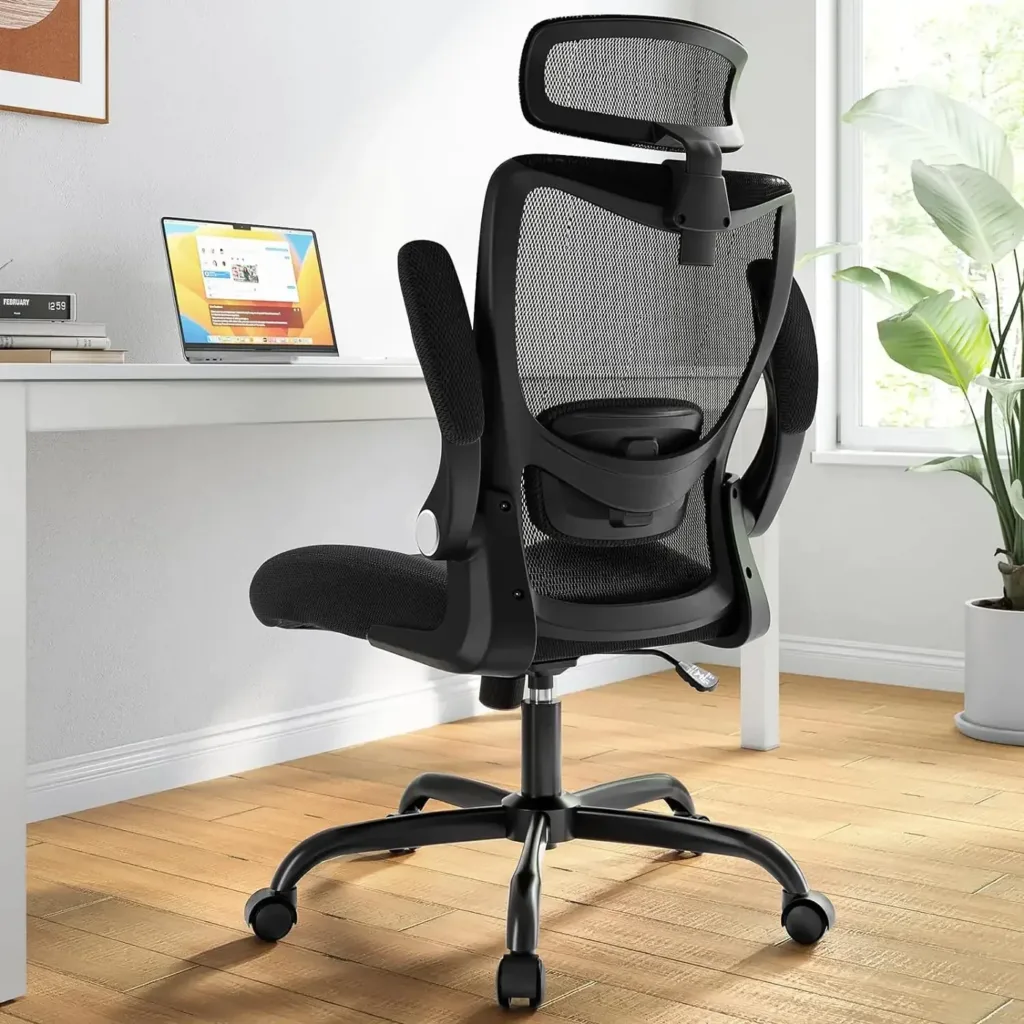
The choice of material directly impacts the chair’s comfort and durability. Mesh fabrics, known for their breathability, offer ventilation that helps keep you cool and comfortable over time. Leather and faux leather options, on the other hand, bring a touch of sophistication and are relatively easy to maintain, although they may not offer the same level of breathability as mesh. Your personal comfort preferences and the specific conditions of your work environment should guide your material selection, ensuring the chair remains comfortable throughout its lifespan.
Related to: Modern Leather Accent Chairs Selection: Best Practices For 2023
Lumbar Support
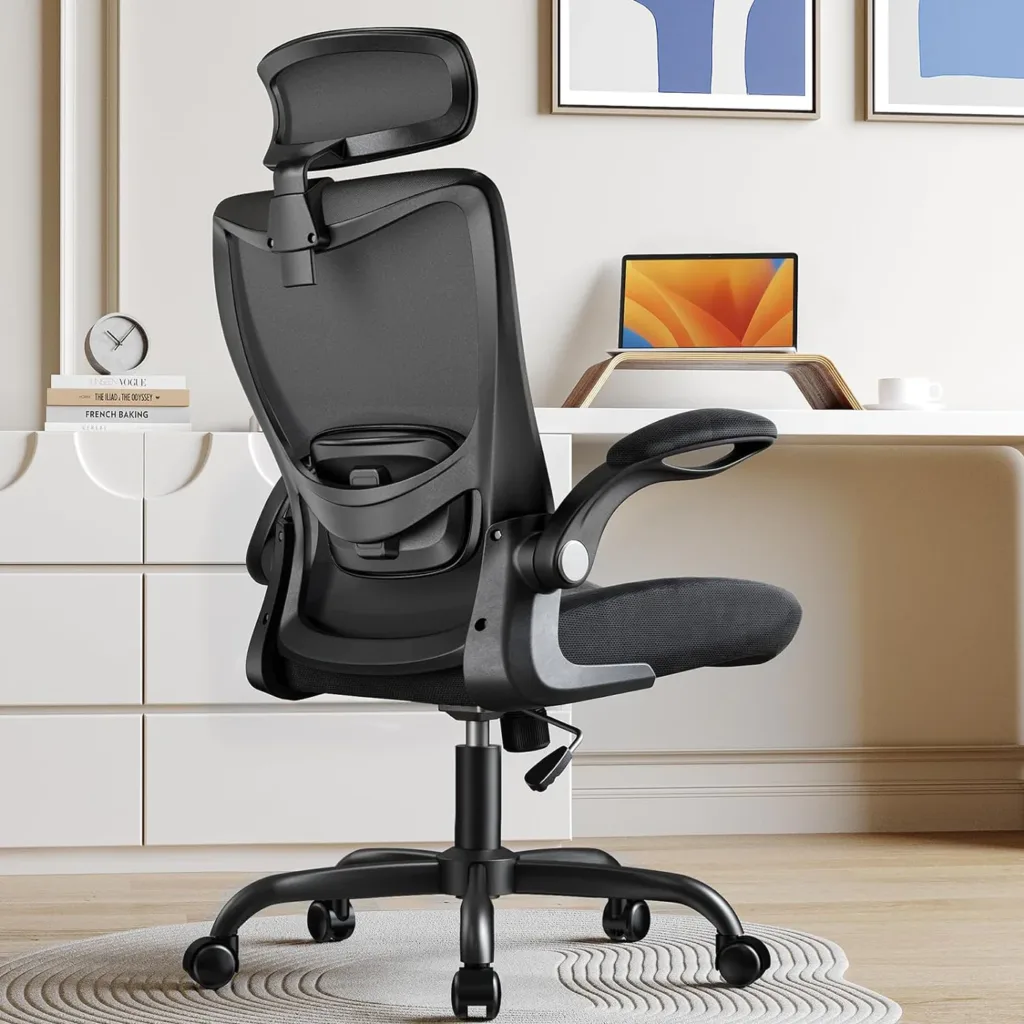
Lumbar support is critical for maintaining the spine’s natural curve and avoiding lower back pain. Chairs that feature adjustable lumbar support allow you to tailor the fit to your lower back, ensuring the spine is adequately supported in its natural curvature. This adaptability is especially beneficial for individuals prone to back issues or those who spend the majority of their day seated, highlighting the importance of lumbar support in preventing discomfort and promoting spinal health.
Seat Adjustability
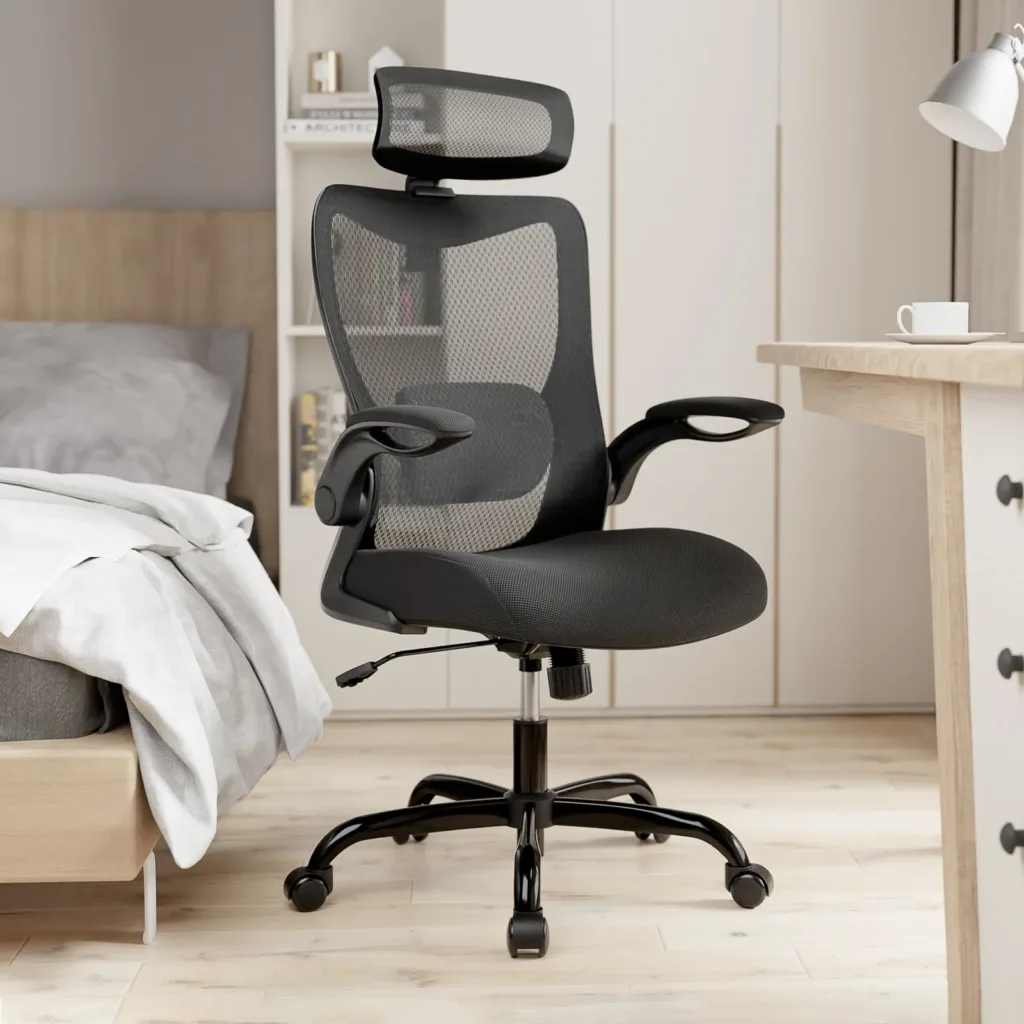
A chair that permits adjustments to the seat height and depth can accommodate a broad spectrum of body sizes and desk configurations. The ability to adjust the seat height ensures that your feet can rest flat on the ground, fostering proper leg circulation and reducing strain. Similarly, appropriate seat depth adjustment allows for comfortable positioning of your knees relative to the seat edge, further enhancing ergonomic support and comfort.
Swivel and Mobility
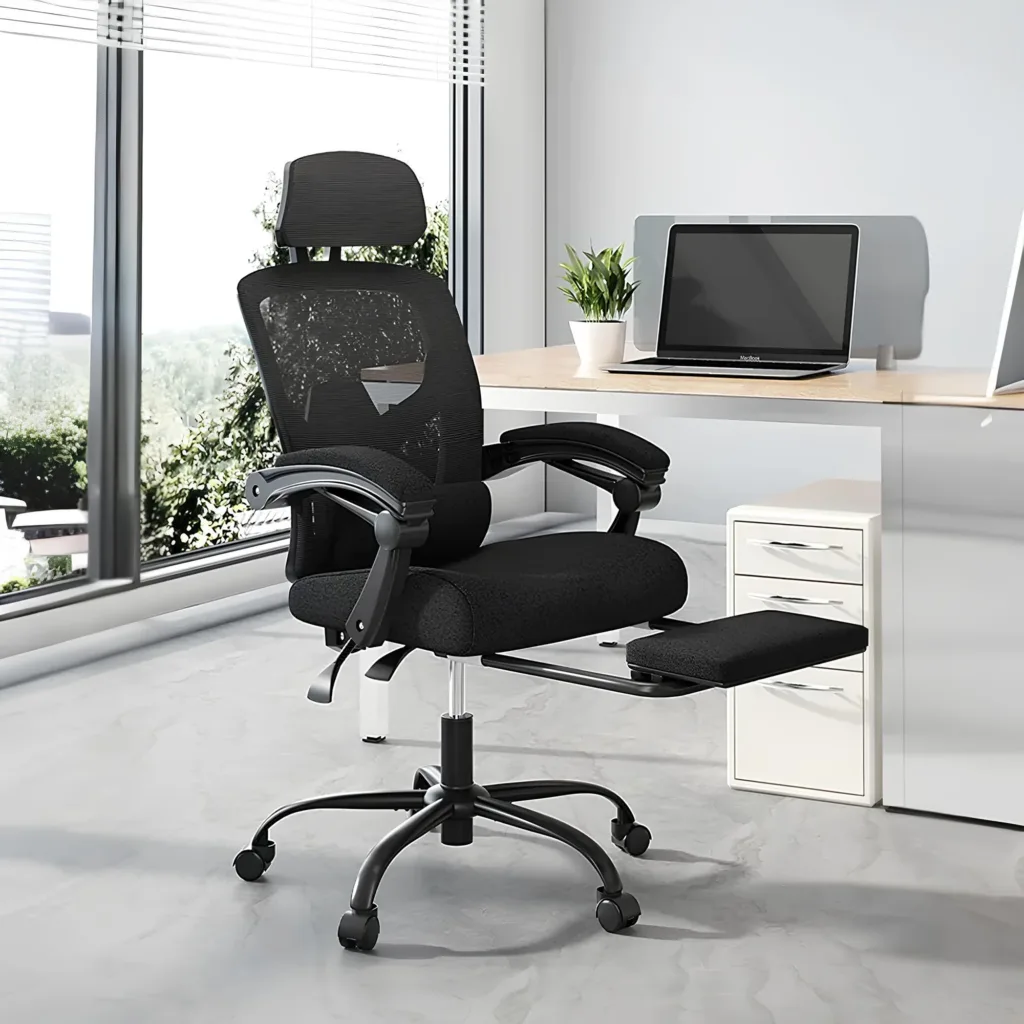
A chair that facilitates easy swiveling and movement enhances accessibility to various parts of your workspace without necessitating awkward stretching or reaching. Choosing a chair with casters that are compatible with your flooring type and a swivel base can significantly increase efficiency and comfort, enabling effortless navigation around your work area. This feature is particularly valuable in dynamic office environments where flexibility and mobility are key.
Related to: How To Choose Accent Chairs For A Minimalist Home – Easy Guide
Durability and Warranty
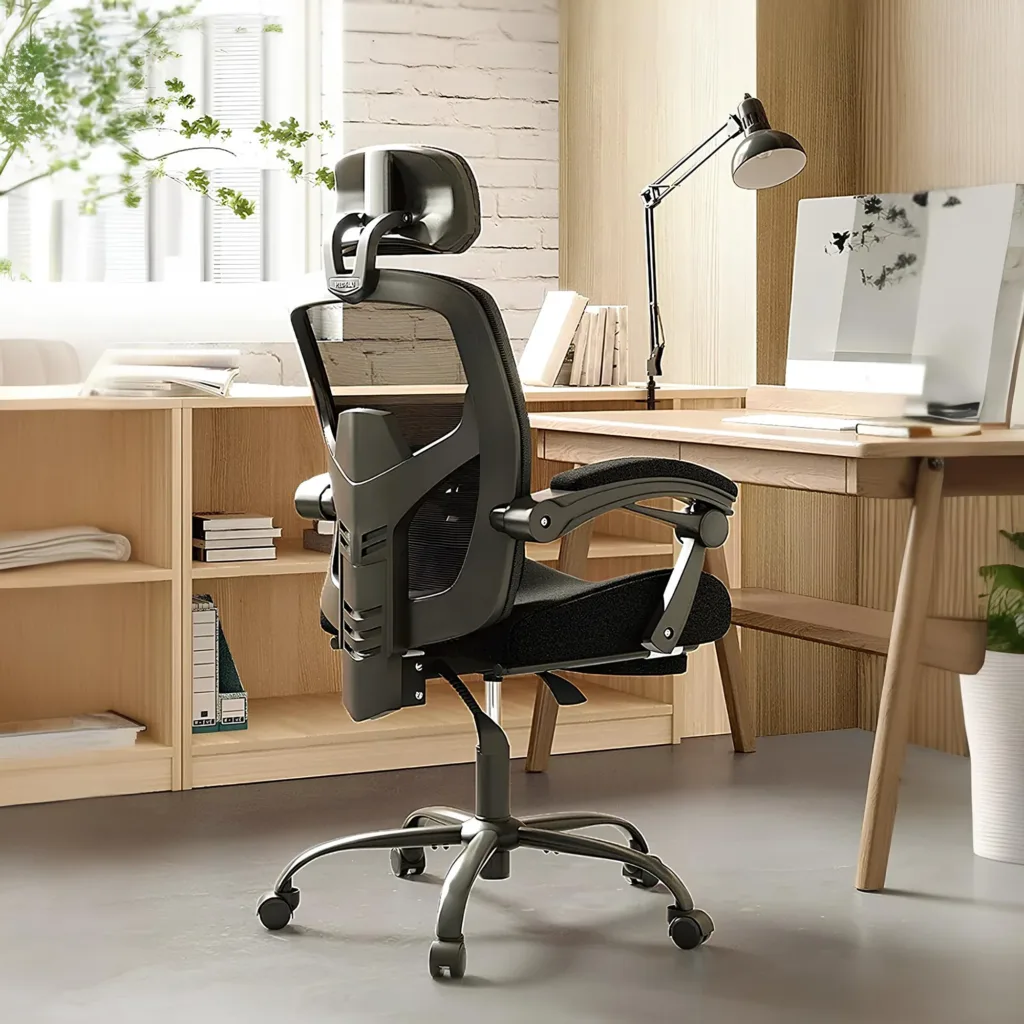
The build quality and materials of your chair are indicative of its longevity. Opting for a chair with robust construction and high-quality materials can avert frequent replacements and ensure sustained comfort and support. Furthermore, selecting a chair accompanied by a warranty offers added assurance regarding your investment, highlighting the manufacturer’s confidence in the product’s durability and performance over time.
Style and Aesthetics
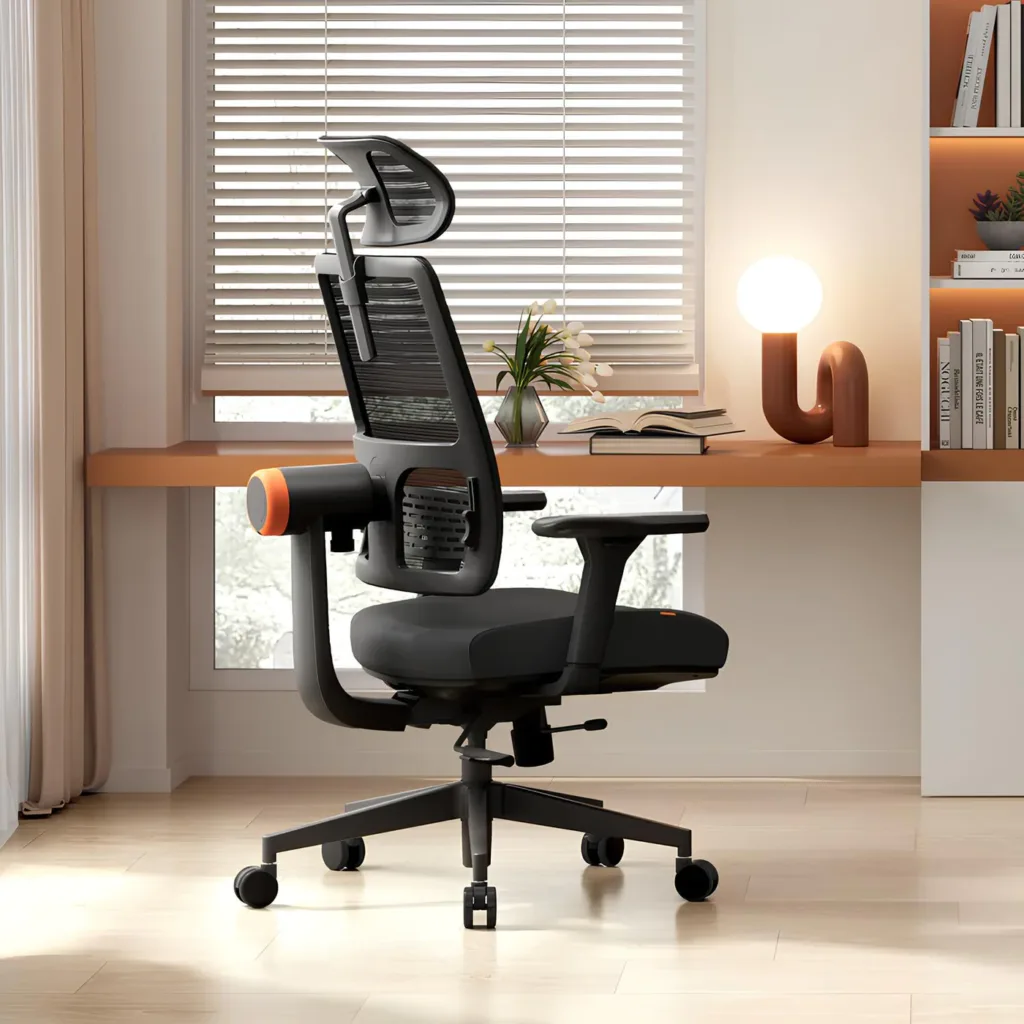
While functional and ergonomic features take precedence, the aesthetic appeal of your office chair is also important. It should enhance your workspace, reflecting your personal style and complementing the overall design theme of your office. The market offers a wide range of styles, from sleek and modern to classic and executive, ensuring you don’t have to compromise on looks for the sake of ergonomics.
Price and Value
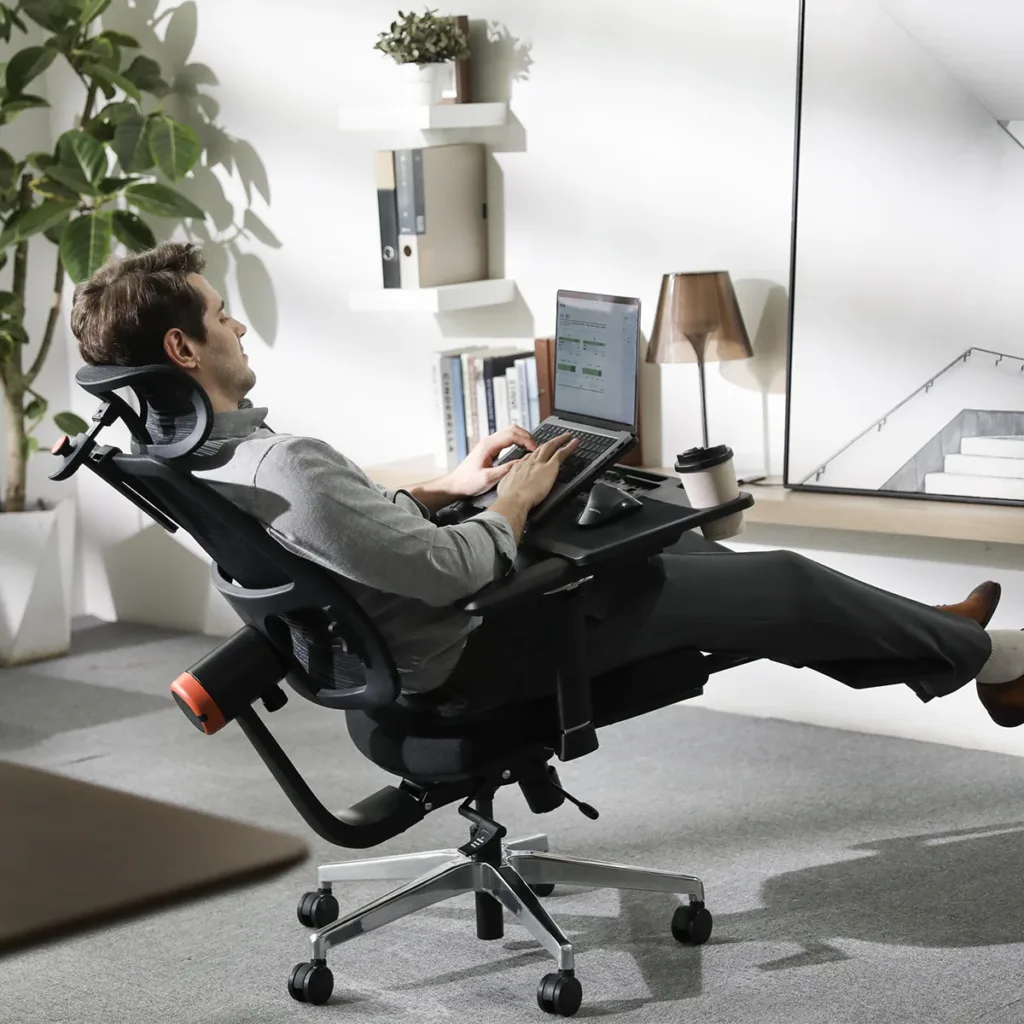
While budget considerations are crucial, the most affordable option may not always represent the best value. Evaluating the chair’s features, materials, and warranty coverage can help you determine whether it offers a good balance of cost and quality. Investing a bit more upfront for a chair that provides superior ergonomic support, durability, and comfort can be more cost-effective in the long run.
Related to: Maximized Minimalism: Best Accent Chairs for Small Spaces
Factors to Consider When Choose Office Chair with Headrest
Choosing the right Office Chair with Headrest is a crucial decision that can significantly impact your comfort, productivity, and overall well-being, especially if you spend long hours working at a desk. To make an informed choice, consider the following factors:
- Ergonomic Design: Look for an Office Chair with Headrest that has an ergonomic design. Ergonomics ensures that the chair supports the natural curves of your spine, promoting good posture and reducing the risk of musculoskeletal issues.
- Adjustability: Check for adjustable features such as seat height, seat depth, armrest height, and headrest height. The ability to customize the chair’s settings allows for a personalized fit that caters to your body’s needs.
- Lumbar Support: Adequate lumbar support is essential. The lumbar region of the spine needs proper support to maintain its natural curve. Chairs with adjustable lumbar support allow you to fine-tune this feature to your lower back’s comfort.
- Headrest Adjustability: An adjustable headrest is crucial for neck and head support. Look for a headrest that can be adjusted in terms of height and angle to ensure proper alignment with your neck and shoulders.
- Quality Material: Consider the material used for the chair’s upholstery. Mesh offers breathability and ventilation, while leather or faux leather provides durability and a more executive look. Choose the material that suits your comfort preferences and the aesthetics of your workspace.
- Seat Comfort: Assess the padding and cushioning of the seat. It should provide adequate support and comfort for extended periods of sitting. A contoured seat design can help distribute your weight evenly.
- Mobility: Check the chair’s mobility features, including swivel capabilities and smooth-rolling casters. Easy swiveling and maneuverability enhance your efficiency and accessibility to different parts of your workspace.
- Durability and Warranty: Look for a chair that is built to last. Assess the construction quality and materials to ensure long-term durability. Additionally, consider chairs that come with warranties, providing peace of mind regarding your investment.
- Style and Aesthetics: While functionality is key, the chair’s appearance matters too. Choose an Office Chair with Headrest that complements your office décor and reflects your personal style. There’s a wide range of styles available, from modern to traditional.
- Price and Value: Budget is a significant factor, but consider the value the chair offers in the long run. Sometimes, a slightly higher upfront cost can provide better features, comfort, and durability, ultimately saving you money over time.
- User Reviews: Read reviews and feedback from other users to get insights into the real-world performance of the chair. User experiences can highlight strengths and weaknesses you might not discover through specifications alone.
- Health Considerations: If you have specific health concerns, such as back pain or circulation issues, consult with a healthcare professional or ergonomic specialist for recommendations on the right chair for your needs.
By carefully considering these factors, you can make an informed decision when choosing an Office Chair with Headrest that not only supports your body but also enhances your overall workspace comfort and efficiency.

Conclusion
Choosing the right Office Chair with Headrest involves more than just picking out a chair; it’s about investing in your health, comfort, and productivity. By considering the ergonomic design, adjustability, material quality, and other key features outlined in this guide, you can find an Office Chair with Headrest that meets your needs and preferences.
Remember, the best choice is one that supports your body comfortably throughout the workday, contributing to a healthier and more enjoyable work environment. Take the time to choose wisely, and your back, neck, and shoulders will thank you for years to come.

